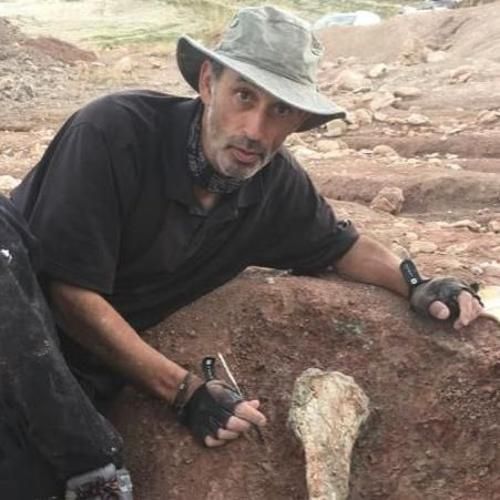
FRANCISCO JAVIER
ORTEGA COLOMA
Profesor Titular Universidad
Department: FÍSICA MATEMÁTICA Y DE FLUÍDOS
Center: FACULTAD DE CIENCIAS
Area: Zoology
Research group: BIOLOGÍA EVOLUTIVA
Email: fortega@ccia.uned.es
Personal web: https://www.uned.es/universidad/docentes/ciencias/francis...
Doctor by the Universidad Autónoma de Madrid with the thesis Historia evolutiva de los cocodrilos Mesoeucrocody 2004. Supervised by Dr. Ángela Delgado Buscalioni.
Francisco Ortega is a Doctor in Biology and has been an Associate Professor at the Faculty of Sciences of the UNED (Madrid) since 2011. He has supervised thirteen doctoral theses and is currently supervising six. He is the head (IP) of the Evolutionary Biology Research Group at UNED (Ref. GI-314). He is the author or co-author of 116 publications in SJR journals, 71 in Q1 and 38 in Q2, with an H-index (Scopus) of 27. He has participated in various capacities in more than 450 national and international conferences in different formats. He has participated in paleontological research projects in Spain, Portugal, Niger, Argentina and the United States. He has been the principal investigator (IP) of several regional projects (9) as well as projects funded by the National R&D&I Plan (2) and the National Conservation Research Plan (1). His research focuses on analyzing the evolutionary history of Mesozoic reptiles and the ecosystems in which they lived. The main lines of research have focused on the analysis of Triassic ecosystems, such as El Atance (Guadalajara), Jurassic ecosystems in the Lusitanian Basin in Portugal and Cretaceous ecosystems, both in the Lower Cretaceous (Las Hoyas in Cuenca and Morella in Castellón) and in the Upper Cretaceous (Lo Hueco in Cuenca or Poyos in Guadalajara). He was involved in the description of new taxa of sauropterygians such as Parahenodus or Paludidraco (Triassic of Guadalajara), turtles such as Selenemys (Upper Jurassic of Portugal) or Eodortoka (Lower Cretaceous of Morella), crocodiles such as Lohuecosuchus and Agaresuchus (Upper Cretaceous of Cuenca), sauropods such as Lourinhasaurus and Oceanotitan (Upper Jurassic of Portugal), Lohuecotitan (Upper Cretaceous of Cuenca), or Pilmatueia (Lower Cretaceous of Neuquén, Argentina) and Spinophorosaurus (Middle Jurassic of Niger), ornithopods such as Eousdryosaurus (Upper Jurassic of Portugal) or Morelladon (Lower Cretaceous of Morella), and theropods such as Pelecanimimus and Concavenator (Lower Cretaceous of Cuenca), Vallibonavenatrix (Lower Cretaceous of Morella), Lusovenator (Upper Jurassic of Portugal) or Lajasvenator (Lower Cretaceous of Neuquén, Argentina). In the field of paleontological conservation, he has been curator of the paleontological collections at the Museum of Sciences of Castilla-La Mancha in Cuenca and co-author of museum projects and exhibitions in various public museums such as the Museum of Sciences of Castilla-La Mancha, the Jurassic Museum of Asturias and the Paleontological Museum of Castilla-La Mancha. He has also participated in several scientific initiatives, including the curation of exhibitions such as "Dinosaurios Maravillosos de España" at the Fukui Prefectural Dinosaur Museum (2014), the Osaka Museum of Natural History (2015) and the Kitakyushu Museum of Natural History & Human History (2015); and interpretation centers, such as that of the "Ruta de los Dinosaurios de Cuenca" as part of the Plan de Mejora de Infraestructuras Turísticas (PLAMIT) of the Diputación de Cuenca, which was awarded a special mention by Hispania Nostra in the Conservation category (2017). He also received the Placa al Merito regional from the Government of Castilla-La Mancha in 2016.









